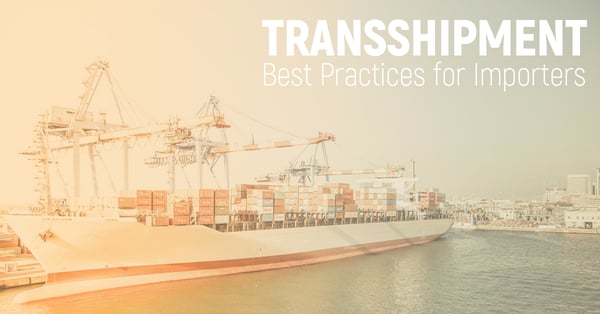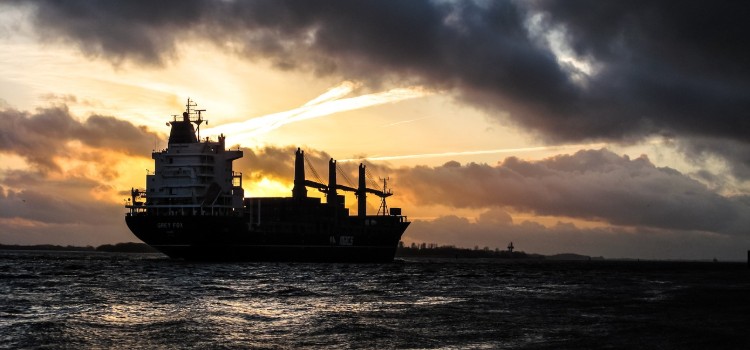
Section 301 tariffs and, to a lesser extent, Section 232 duties make it more attractive for importers to gain the system.
Section 232 imposes a 25% tariff on imported steel and a 10% tariff on imported aluminum. Section 301 levies an additional 25% in duties for thousands of Chinese products, including everything from agricultural products to consumer goods, industrial items, and chemicals.
The law requires U.S. importers to verify their imports come from the country listed on their import documents. Failing to do so is a crime and is punishable under the law. Unfortunately, as U.S. tariffs increase, some overseas manufacturers make this harder by employing deceptive transshipment. This is the practice of moving cargo from one country to another by way of a third country to evade trade restrictions, and it’s more common than you think.
U.S. Customs and Border Protection (CBP) recently found that a Vietnam-based timber products manufacturer was importing products from China and relabeling them for export to the U.S. to avoid Section 301 tariffs.
The scale of tariff dodging isn’t fully known. What is known is that the current trade war gives companies more reason to practice deceptive transshipment than in the past, and CBP seeks to uncover these fraudulent practices. Its officials even visit overseas factories to verify the country of origin and identify illegal activities.
Should CBP expose deceptive transshipment, it may hold importers liable. Importers need to adopt four essential best practices to protect themselves.
Know Your Suppliers
Vetting suppliers and building relationships with them is the first line of defense against transshipping.
A red flag should rise if a product once originated from China suddenly appears to come from elsewhere in Southeast Asia. Here, an importer should inquire about the supplier’s production practices. Further, it behooves importers to visit overseas suppliers’ production facilities or at least ask for photographs of them.
While some companies legitimately produce the products they export, others may be a front for a foreign company seeking to avoid tariffs. Visiting their operations helps identify whether production takes place on-site.
Double Check Country of Origin
Section 304 of the Tariff Act of 1930 requires manufacturers to mark all articles of foreign origin. These markings inform a U.S. purchaser of the article’s country of origin (COO). Companies should double-check these marks to verify COO before importing goods to the U.S.
At the minimum, obtain photographs of COO markings on products before importing. Scrutinize the marks to verify they meet marking guidelines. Customs requires COO markings to be permanent, legible, and conspicuous --placed where they are found easily with a casual examination.
CBP considers branding, stamping, stenciling, printing, and molding the best forms of marking. Manufacturers can use tags and adhesive labels in some cases, but they are generally not recommended. However, some goods, such as fruit, are not easily marked. In these cases, it is appropriate to affix the COO marking to the outer container.
Companies should also obtain a marking for finished articles if the imported product undergoes a substantial transformation in another country. CBP defines substantial transformation as production that results in a new and different good, which then has a name, character, use, and tariff code that differs from the original materials. Also, ask for a list of materials used in the manufacture of that article. This list should include where materials originated in case there is a verification issue later.
As illegal transshipping concerns increase, CBP is more closely inspecting these markings. CBP leverages sophisticated tracking software with predictive analytics to show shifts in the country of lading and carefully inspects goods when there is even an inkling of illegal activity.
A Binding Ruling Can Help
Not all transshipments are illegal. Federal law allows importers to say goods come from a given country when they are substantially transformed there.
For instance, a company could use a “Made in X country” label when they fashion an aluminum sheet into a bike frame before shipping, but they cannot put this label on a sheet of imported aluminum they plan to export.
However, the law is not always this crystal clear around substantial transformation. One example, shortly after Section 301 went into effect, involved three motor assemblies (stators and rotors) coming from China to Mexico for final assembly into an electric motor. The company requested a binding ruling. Upon review, CBP determined the imported components satisfied the requirements for marking the assembled product as a product of Mexico. However, it also ruled the Chinese-origin stators and rotors were not substantially transformed in Mexico. This subjected the final product to Section 301 tariffs.
Requesting a binding ruling does not always lead to one being put in place. However, when a binding ruling is in place, it can mitigate transshipping confusion. A binding ruling responds to issues such as classification, valuation, and country of origin for certainty before importing. The resulting CBP merchandise classification is binding for all future shipments of the product.
These rulings prevent unnecessary Customs delays and remove uncertainties. However, as the above example illustrates, tariff classification is complicated. Importers should obtain legal counsel to lead them through the binding ruling process.
Before hiring an attorney, it’s recommended to perform a cost-benefit analysis. Ask critical questions such as:
- How many shipments are coming in?
- What is the product value?
- How much will you save if a binding ruling is in place?
A binding ruling only makes sense if an importer saves 25% or more, but not if the ruling is for a single shipment.
Participate in Trusted Trader Programs
Importers can further protect themselves by getting involved in trusted trader programs. Two primary programs to consider are the Customs-Trade Partnership Against Terrorism (CTPAT) and the Importers Self-Assessment (ISA).
CBP works with the trade community through CTPAT to strengthen international supply chains. It is a voluntary public-private sector partnership program designed to raise the bar on cargo security. To date, CTPAT reports 11,400 certified partners in the program. Its partners include U.S. importers/exporters, carriers, Customs brokers, port authorities, freight consolidators, and manufacturers. When an importer joins CTPAT, they partner with CBP to protect the supply chain, identify security gaps, and implement specific security measures and best practices.
ISA is also a voluntary program for U.S importers designed to improve trade compliance. Companies with two years of importing experience and certified in the CTPAT program can participate in ISA. ISA participants agree to self-assess their imports. They promise to control their environment and activities by identifying risk areas and communicating, informing, and monitoring their Customs operations.
Partners in these programs use their risk assessments to create a compliance manual for imports. They then routinely audit Customs entries for deceptive transshipment.
It’s essential to know how to handle shipments to avoid surprise tariffs properly. When importers vet and identify their suppliers, gather documentation about their suppliers’ products and production facilities, and join trusted trader programs, they significantly reduce their risk for deceptive transshipment.




